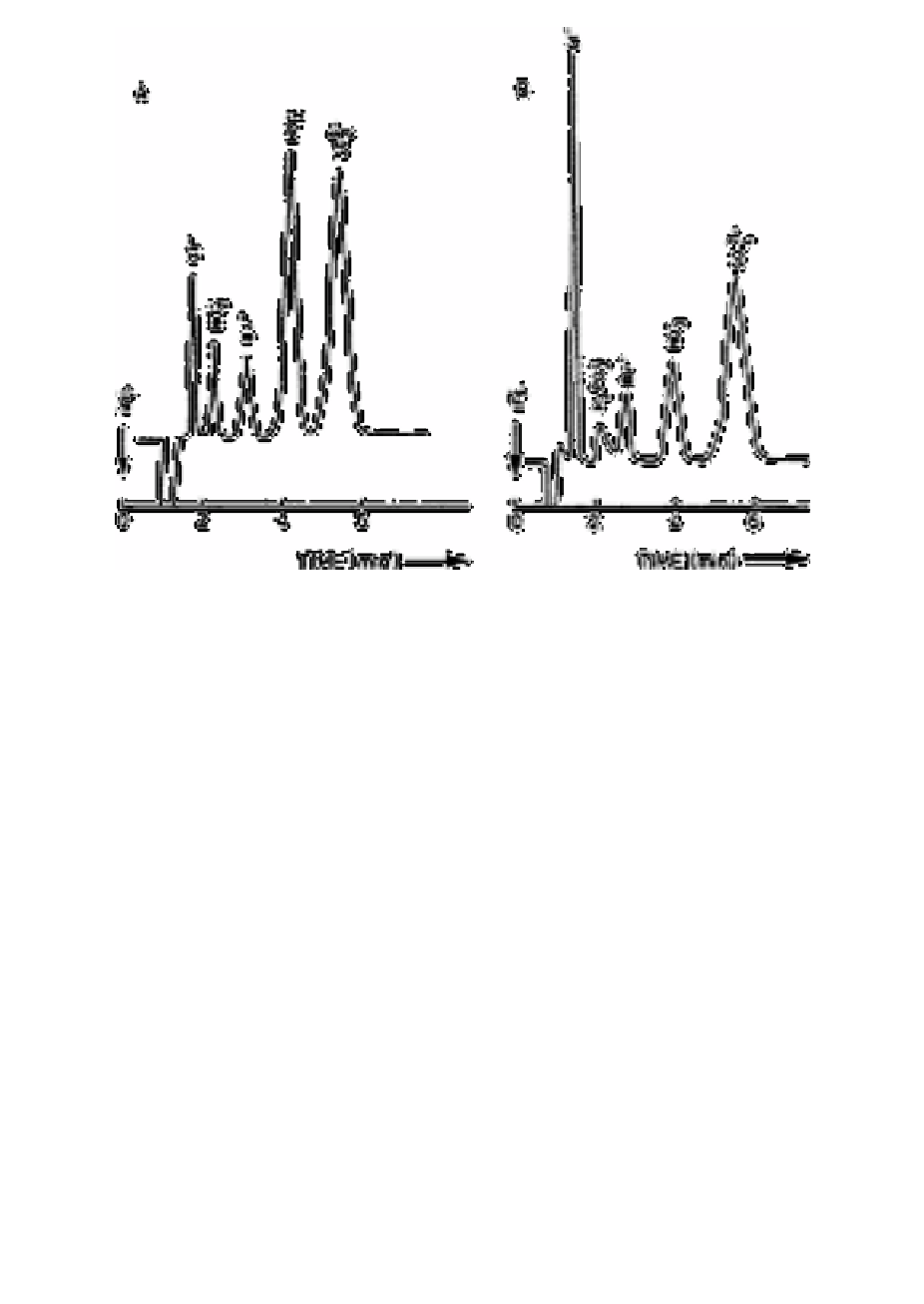Chemistry Reference
In-Depth Information
Fig. 12.10
Separation of trace anions on a 200×4.5mm Zipax SAXC column: A
separation of 2mg L
−1
Cl, 5mg L
−1
NO
2
−
, 5mg L
−1
Br
−
, 20mg L
−1
NO
3
−
and 20mg L
−1
SO
4
2−
with 2×10
−3
mol L
−1
Na2 adipate as
eluent; B separation of 5mg L
−1
Cl
−
, 5mg L
−1
H
2
PO
4
−
, 5mg L
−1
Br
−
, 7.5mg L
−1
NO
3
−
and 1.5mg L
−1
SO
4
2−
with 1.4×10
−3
mol L
−1
Na
2
succinate as eluent. Other conditions: 50µL loop, eluent flow
rate 2.5ml min
−1
, 25°C
Source: Reproduced with permission from Elsevier Science [11]
In Fig. 12.10 are shown the separations achieved on this system when (A) 2×10
−3
mol L
−1
disodium adipate and (B) 1.4×10
−3
mol L
−1
disodium succinate used as eluants, both at
pH 7.
On Zipax SAX the ions are eluted in the order
Fluoride is eluted together with the negative water peak. On
Zipax SAX the optimal eluent temperature for obtaining good resolution in the minimal
time is about 25°C.
Detection limits (three times the background noise) for chloride, nitrate and sulphate
were determined for a 200µL loop and for a concentrator column. These are given in
Table 12.3.
The lifetime of a Zipax SAX slurry packed separator column was at least 400h.
Deterioration of the packing resulting in peak broadening did not appear and almost no
reduction of capacity was observed during that period. The lifetime of the suppressor



Search WWH ::

Custom Search